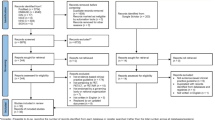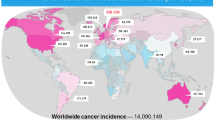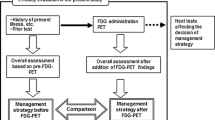Abstract.
Positron emission tomography (PET) is the most powerful molecular imaging technique currently available for clinical use. Because deranged tumour metabolism is a common finding in many malignancies, PET is frequently used for tissue characterisation, staging and therapy control. Four previous consensus studies in Germany, performed up to 1997, have established indications for fluorine-18 fluoro-2-deoxy-D-glucose (FDG) PET in oncology, neurology and cardiology. More than 10,000 references on FDG-PET have been published in the meantime, mostly on oncological issues. Therefore, it was the aim of the present paper to provide an update on the clinical use of FDG-PET in oncology. For this purpose a systematic literature search was performed in all common medical literature databases. All hits were manually checked and abstracts, case reports, technically oriented papers and reviews were excluded from analysis. A questionnaire comprising 24 items was developed for standardised quality assessment according to evidence-based medicine (EBM) criteria. We selected 533 papers for further review by an interdisciplinary panel of 58 experts from oncology, radiology and nuclear medicine. Clinical use was judged according to the following grading scheme: 1a, established clinical use; 1b, clinical use probable; 2, useful in individual cases; 3, not yet assessable owing to missing or incomplete data; 4, clinical use rare (either as inferred from theoretical considerations or as demonstrated by published studies). Of the 533 papers selected, 122 references with 7,092 documented patients fulfilled the EBM criteria for detailed review. The results of these studies were tabulated and are available at www.nucmed-ulm.de. Clinical indications (grade 1a or 1b) were established for differentiating benign from malignant lesions in pulmonary nodules, pancreatic masses and residual masses after chemotherapy in malignant lymphoma. Staging was improved by FDG-PET in oesophageal cancer, breast cancer, head and neck cancer, lung cancer, malignant lymphoma and malignant melanoma. Effectiveness of radio- and/or chemotherapy could be better controlled in Hodgkin's disease and high-grade non-Hodgkin's lymphoma. Restaging was improved in relapsing thyroid cancer, colorectal cancer, head and neck cancer, lung cancer and malignant melanoma. In summary, the efficiency of FDG-PET was studied in several thousand patients with malignant tumours and was found to be well documented in the international high-quality peer-reviewed literature. There are clear-cut clinical indications for FDG-PET in diagnosis, staging and therapy control, and the technique can help to improve the management of many patients with cancer.
Similar content being viewed by others
Author information
Authors and Affiliations
Additional information
Electronic Publication
Rights and permissions
About this article
Cite this article
Reske, S.N., Kotzerke, J. FDG-PET for clinical use. Eur J Nucl Med 28, 1707–1723 (2001). https://doi.org/10.1007/s002590100626
Published:
Issue Date:
DOI: https://doi.org/10.1007/s002590100626




